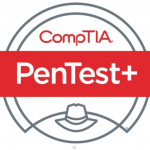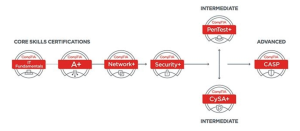Course Overview:
AWS System Operations begins with a one day introduction to AWS products, services, and common solutions. It provides you with fundamentals to become more proficient in identifying AWS services so that you can make informed decisions about IT solutions based on your business requirements and get started working on AWS.
The AWS course continues to flow with teaching those in a Systems Administrator or Developer Operations (DevOps) role how to create automatable and repeatable deployments of networks and systems on the AWS platform. The course covers the specific AWS features and tools related to configuration and deployment, as well as common techniques used throughout the industry for configuring and deploying systems.
To continue to learn more about AWS, TechNow has the following course:
CL-425: AWS Security Operations and Architecture
Attendees to CL-415: AWS System Operations will receive TechNow approved course materials and expert instruction.
Duration: 5 Days
Audience:
This course is intended for:
• System Administrators
• Software Developers, especially those in a Developer Operations (DevOps) role
DoD 8140: Not Mandated
Course Prerequisites:
We recommend that attendees of this course have the following prerequisites:
• Background in either software development or systems administration
• Some experience with maintaining operating systems at the command line (shell scripting in Linux environments, cmd or PowerShell in Windows)
• Basic knowledge of networking protocols (TCP/IP, HTTP)
Course Objectives:
This course is designed to teach you how to:
• Understand basic data center design concepts.
• Recognize terminology and concepts as they relate to the AWS platform and navigate the AWS Management Console.
• Understand the foundational infrastructure services, including Amazon Virtual Private Cloud (VPC), Amazon Elastic Compute Cloud (EC2), Amazon Elastic Block Store (EBS), Amazon Simple Storage Service (S3), Auto Scaling, and Elastic Load Balancing (ELB).
• Understand the security measures AWS provides and key concepts of AWS Identity and Access Management (IAM).
• Understand AWS database services, including Amazon DynamoDB and Amazon Relational Database Service (RDS).
• Understand AWS management tools, including Amazon CloudWatch and AWS Trusted Advisor.
• Use standard AWS infrastructure features such as Amazon Virtual Private Cloud (VPC), Amazon Elastic Compute Cloud (EC2), Elastic Load Balancing, and Auto Scaling from the command line
• Use AWS CloudFormation and other automation technologies to produce stacks of AWS resources that can be deployed in an automated, repeatable fashion
• Build functioning virtual private networks with Amazon VPC from the ground up using the AWS Management Console
• Deploy Amazon EC2 instances using command line calls and troubleshoot the most common problems with instances
• Monitor the health of Amazon EC2 instances and other AWS services
• Manage user identity, AWS permissions, and security in the cloud
• Manage resource consumption in an AWS account using tools such as Amazon CloudWatch, tagging, and Trusted Advisor
• Select and implement the best strategy for creating reusable Amazon EC2 instances
• Configure a set of Amazon EC2 instances that launch behind a load balancer, with the system scaling up and down in response to demand
• Edit and troubleshoot a basic AWS CloudFormation stack definition
Dates/Locations: No Events
Course Outline:
Day 1
• Introduction and History of AWS
• AWS Infrastructure: Compute, Storage, and Networking
• AWS Security, Identity, and Access Management
• AWS Databases
• AWS Management Tools
Day 2
• System Operations on AWS Overview
• Networking in the Cloud
• Computing in the Cloud
Day 3
• Storage and Archiving in the Cloud
• Monitoring in the Cloud
• Managing Resource Consumption in the Cloud
Day 4
• Configuration Management in the Cloud
• Creating Scalable Deployments in the Cloud
• Creating Automated and Repeatable Deployments
Day 5
Full Day Lab
• Select the appropriate AWS service based on compute, data, or security requirements
• Execute steps required to provision cloud resources for selected deployment
• Identify and implement data protection, encryption, and capacity planning
• Implement and manage security policies, access controls, and role
• Implement Automation

